Programming for perfect shade
Designed on a computer and built with the help of robots: ETH students studying for the MAS in Architecture and Digital Fabrication have built a wooden pergola to turn the sun-baked terrace at the Istituto Svizzero in Rome into a pleasant, shady spot. Their project demonstrates the potential that digital fabrication holds for wooden buildings.
For an idea of what digital technologies are capable of in architecture, look no further than the Istituto Svizzero in Rome, where an extraordinary wooden pavilion has stood on the terrace of an annex to the Swiss cultural institute since June. What is striking about the almost four-metre-tall construction is how its short wooden elements are joined with nothing more than wooden dowels.
Depending on the position of the sun, the system of wooden elements expands and thickens so as always to provide shade. “If you look more closely at the pergola’s structure, you will discern a set of rules that hint at the digital origin of the design. Each wooden element is part of a greater system, which explains the gradual transitions that gave the pavilion its name: Gradual Assemblies,” says Hannes Mayer, Programme Director of ETH’s MAS in Architecture and Digital Fabrication and Senior Researcher at the Chair of Architecture and Digital Fabrication.
The Master of Advanced Studies (MAS) in Architecture and Digital Fabrication aims to skill the next generation in digital planning and fabrication. One aspect of this training is that it employs construction projects as a way to understand not just the entire process of digital planning and construction but also the physical act of construction and the constraints placed by the real world – from concept to completion. At the same time, the study programme puts robotic manufacturing in the spotlight.
A terrace for a building site
The Istituto Svizzero offered students a site on which to build the pavilion: the Travertin Terrace, an L-shaped space covering 250 square metres atop an annex of the Swiss cultural institute. This terrace is exposed to the relentless Roman sun throughout the day, which makes it almost unusable despite its beautiful location.
Students saw this project as particularly challenging. “Rome was once a city of architectural innovation that brought art and technology together. Today, we mostly think of it as a historical site. This was a chance for us to bring innovative strength back to Rome,” Mayer says.
Gradual Assemblies, a Summer Pavilion for the Istituto Svizzero, Rome
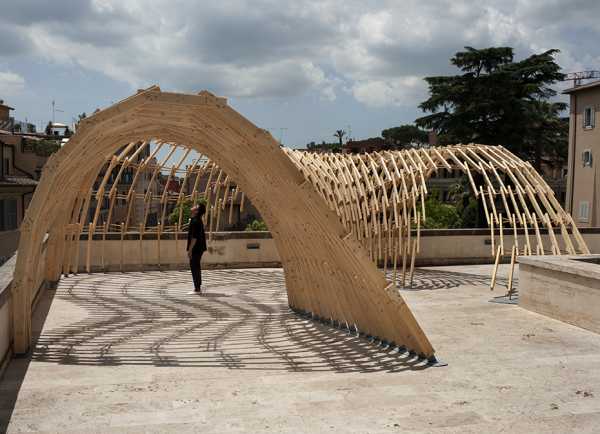

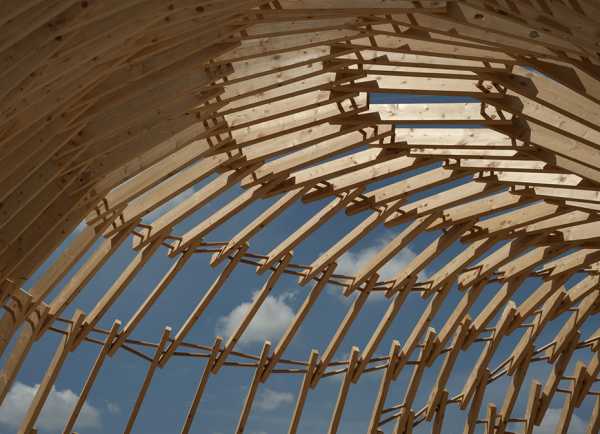
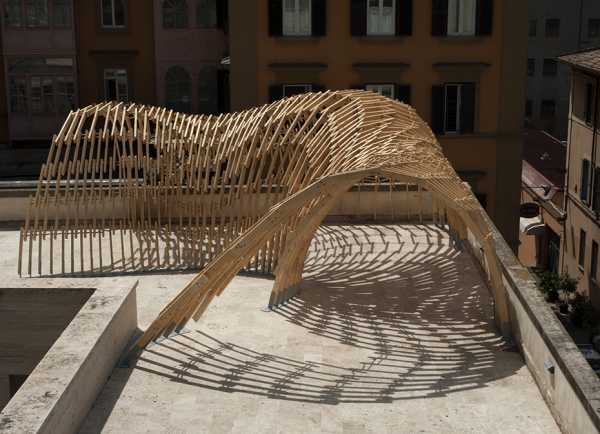
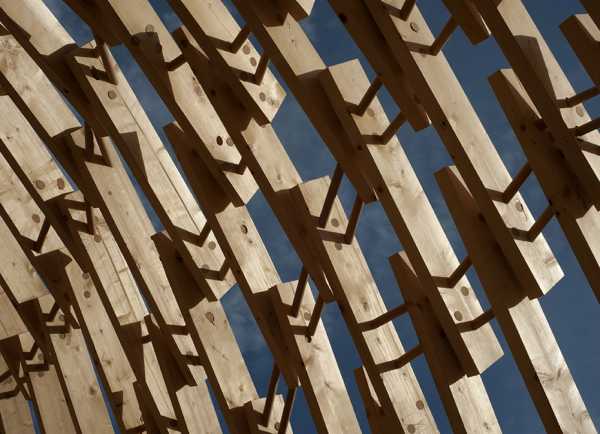
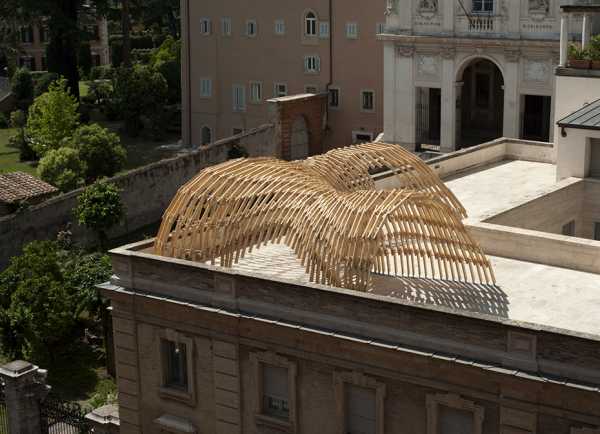
And that’s just what the 17 students did – in almost no time at all: they designed, developed and built the pavilion in under ten weeks. Three of those weeks were spent manufacturing the elements in Zurich; it took one week to erect the pergola on the terrace. An official opening ceremony marked the completion of their work at the end of June.
Purely digital process chain
The pergola’s development and construction followed a purely digital process chain in which the students created a digital model that integrated their initial design, the results of a sun-position simulation to work out where to place the wooden elements, the construction parameters and the manufacturing data.
Mayer points out the benefits of digital development: “It would have been impossible to use traditional methods to define the positions of the 700 wooden elements and 2,700 beech dowels in such a way as to produce a dynamic and harmonious whole. To do that takes rules, which, when translated into algorithms, unite all the disparate elements into a powerful and graceful structure.”
The advantage of this design is how the dowels and wooden slats interact to result in an open structure. This also means that the pavilion can follow a curved line and that the supporting components can taper or fan out as necessary. The 11 arch-segments that the students erected on this Roman terrace are made up of 22 individual elements connected to give the impression of a seamless overall structure.
No glue, no nails, no screws – just timber
All the elements making up the pergola were manufactured in the Robotic Fabrication Laboratory at ETH Zurich. Two robot arms, fitted to a gantry system suspended from the ceiling of the Institute of Technology in Architecture on ETH’s Hönggerberg campus, took their instructions from the digital model. While one arm held the wooden slats in place with millimetre precision, the other drilled holes for the wooden dowels at various opposing angles, which helped the dowels hold the parts together more securely. “Robots are the perfect tool for this job, because they can position the individual elements with incredible precision. This allows us to bring the most complex and nuanced of digital designs into reality,” Mayer says.
But it was impossible to go completely without human involvement: the students had to hammer all the wooden dowels into place by hand. First, they dried the dowels in an oven, making them shrink so that they could be hammered into smaller holes. Once the dowels were in place, they were moistened to make them swell up and create a solid join with the wooden elements. Apart from the joints between the metal floorplates and the supports, the pavilion makes absolutely no use of glue, screws or nails.
“This is a case of wood and moisture interacting with the digital design and fabrication tools to push the boundary of what wood joining techniques can do,” Mayer says. “The art of wood joining first reached a high point in the Middle Ages,” he adds, “but it was later overshadowed by industrial building technology. Now at ETH Zurich, it is once again emerging from the shadows to provide wonderful new shade in Rome.”
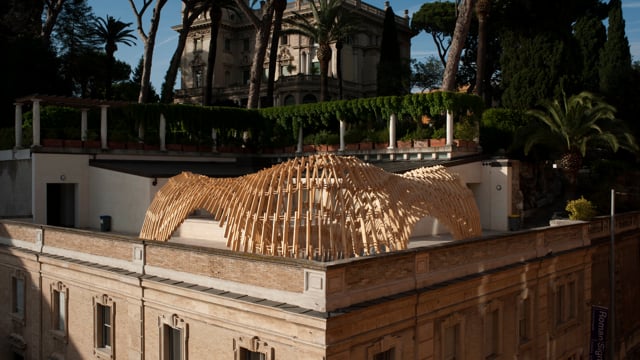
Summer series
Finally holiday time: ETH News will present a special summer series during the break, with a new focus periodically. Already published in this series:
11.07. Sweating for a cooler Singapore
18.07. Learning to work scientifically

Comments
Additional comments are available for the German version of this article. Show all comments
what happens when it rains? doesn't the differential expansion (and eventual shrinkage) cause the whole thing to deteriorate? how long before the wood start to warp, crack, and misalign? have you considered making this out of a wood alternative material with better resistance to the elements?